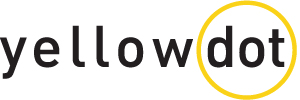With content marketing gaining more and more visibility today, you may be wondering just what it is and how you can use it to engage your prospects and customers.
For one thing, content marketing is not new, and it’s not the same as social media. Content marketing has been actually been around as long as we have, long before social media. Content marketing is the simple act of sharing information, and a device you can use to educate prospects or customers in a way that affects their behavior.
At a recent networking event, I realized that simply by sharing my story and engaging in conversations, I was marketing my content. I made it a point throughout the evening to strike up conversations, and provide any insight and strategies I could with each interaction. I wanted other professionals to first consume my information, and then I gradually pulled them in to my “story”, in exchange for their card or a meeting.
This is something most people do naturally, without realizing, as a way to influence behaviors. There’s really nothing new about content marketing. Businesses have been using this strategy for years. What makes content marketing seem new is social media – we have a new way to tell our story. Today we can open up direct lines of communication with prospects and customers on Facebook, Google+, Twitter and LinkedIn. We can tweet, chat, post, share updates, join Google hangouts, and share content through webinars, videos, and newsletters.
If you’re ready to start winning friends and influencing behaviors to drive business, here are some tips to get you started.
Know your story
Ask yourself what the primary benefit is that you provide to your audience. Then use this primary benefit to craft a core message, or value proposition. An example of a core message is “You can have a profitable contracting business in less than one year.” Your core message serves as guide for the content you create. While you’re brainstorming new content, anything that doesn’t support your core message should be tossed out.
Follow these steps to determine your core message:
- Make a list of all the benefits you provide
- Narrow that list down into one primary benefit, or core message
- Create sub-categories of your core message. For the core message above, sub-categories could be “business plan”, “contracting business” or “contractor rates”.
Find out why your customers choose you
Why do your customers choose to do business with you instead of with one of your competitors? What tips the scale in your favor when they’re ready to make a purchasing decision? Find out what sets you apart, and what factors contribute the most to their final decision. Factors can include price, convenience, quality, features and benefits, company trust and integrity, product or service uniqueness, and more. There’s a good chance it’s a combination of factors. Keep in mind that every buyer will weigh in with different values and concerns.
Survey your existing customers to pinpoint why you’re their vendor of choice. A survey can be an email campaign, a survey on you website, a direct mail piece, over the phone, or a direct face-to-face conversation by your sales force.
Once you determine what factors most strongly influenced the decision to buy from you, buying patterns begin to emerge.
Know your target audience
Next, find out who your target audience is and where they hang out. These are the people you want to connect with. What social media sites do they use? What organizations do they belong to or magazines do they subscribe to? Find out what events they attend and if possible, exhibit or speak at those same events.
Once you know who your prospects are, create one or two sample market personas, or profiles, of your ideal customer. This will help keep your content more personal and tailored to the needs and buying habits of your prospects. Take some time to identify the day-to-day struggles of each persona and then solve their problems with your top-of-the-funnel content (blogs, whitepapers, guides, webinars, and more).
Determine the type of content
Typical types of content include blog articles (aim for 500 and 1500 words), webinars, whitepapers, videos, newsletters and e-Books. You can start with one type of content at a time, like a blog, and add in others as you progress.
Webinars are great for workshops or training sessions where you present information to a live audience. Whitepapers can provide extra value to your followers, by giving them researched information that helps them solve specific problems. Newsletters are another way to build an email list by providing special offers, discounts and tips to your followers.
Mapping out a plan is your first step with content marketing. From there you’ll want to create goals so you can measure your progress. At Yellowdot, we can help you create a system that keeps you on track. Whether you want a strategy that works or need us to write great content, we’ll help you reach your goals. Schedule a free consultation and start creating content that gets results.

